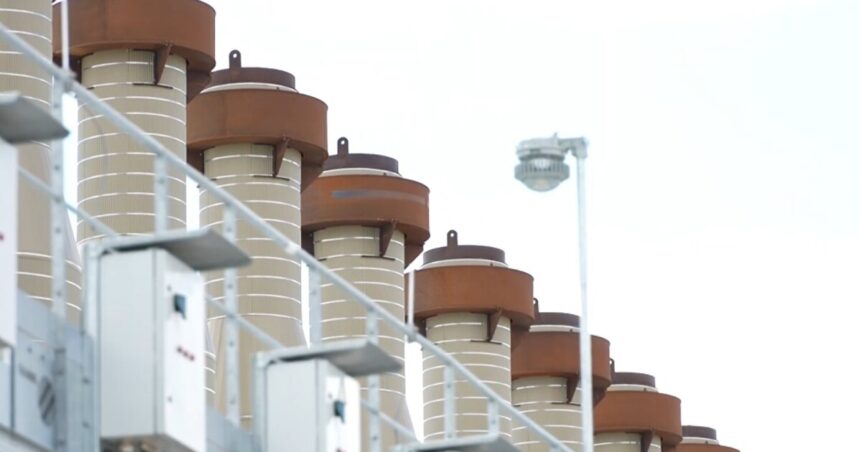LAUREL- Towering above a 33-acre parcel of land stand 18 engines now powering Montana after two years of construction.
The Yellowstone Generating Station first threw power across the grid on March 7 and will serve as an essential project for NorthWestern Energy’s portfolio as the high summer heat kicks up power demand across the region.
MTN News
The gas plant is no stranger to controversy and is still tied up in legal battles. But Project Manager Joshua Follman hopes a look inside might help win over Montanans about its worth.
“This is the also the biggest plant that I’ve ever been a part of,” said Follman.
The Yellowstone generating station will provide on-demand power, according to NorthWestern Energy, supporting the unpredictability of renewables such as wind and solar during extended periods of peak demand.
During extreme cold snaps, or intense heat waves, Follman says NorthWestern can support the grid in the blink of an eye.
“This one is supposed to start up very quickly in less than eight seconds, and the reason is because there are days the wind just doesn’t blow,” he said.

MTN News
Originally from Anaconda, Follman has been working on the plant for the past two years and knows its inner workings, inside and out.
This is the largest caterpillar install in the United States with the largest megawatt output and with the most engines,” he said.,” he said.
Generating 175 megawatts, the Laurel gas plant will help add to an already robust energy portfolio for Northwestern Energy.
Northwestern Energy has 220 megawatts coming from Colstrip, with another 220 being acquired from Avista in the beginning of 2026. In addition, there’s 450 megawatts of wind, 170 megawatts of solar and 490 megawatts of hydro.
The focus, according to Northwestern Energy’s Vice President John Hines, is making sure that power structure remains reliable in the future, during critical weather incidents.
“And unfortunately, while we have more wind and solar than we have any other resource, it’s typically not available during critical weather events when it’s really, really cold or when it’s really hot. And that’s when our customers need power the most,” said Hines.
That’s where Laurel’s gas plant comes into play.
“So when those renewables drop off, we have the ability to pick up and keep that grid energy just right there,” said Follman.

MTN News
The gas plant operates much like the engine in your car, according to Follman, with the help of all 18 natural gas reciprocating internal combustion engines. The units can ramp up quickly with multiple starts and stops.
At the height of its construction, the project employed roughly 300 people. When that is scaled back, it will employ 10 full-time skilled workers, generating as much as $4.25 million in estimated annual property taxes to Yellowstone County.
In May of 2024 four Laurel residents, who live near the plant, filed a lawsuit claiming Yellowstone County commissioners intentionally cut the public out of the zoning process to clear the plant for construction.
Those residents, along with other environmental groups such as the Northern Plains Resource Council, want to reverse approval of the plant and see it decommissioned.
In addition, environmental groups are going after the greenhouse gas emissions and impacts of lighting and noise to nearby residents.
Follman bucks the idea that the plant is harmful to the surrounding property owners and environment, with low noise and emissions.
“This is one of the probably cleaner if not the cleanest reciprocating plants in the country right now,” said Follman.
He says the output is four parts per million of emissions.
“So, a real-world example of this,” he said. “If you had a million gallons of water all lined up in a row, you would have four of them that you probably shouldn’t drink.”

MTN News
Hines points to the economic factors of the Yellowstone Generating Station, saying if the Laurel plant had operated during a December cold snap in 2022, customers would have avoided $4.7 million in energy market purchases.
The plant serves as a critical component in the grand mission to be net-zero emissions by 2055. Northwestern Energy officials say on-demand energy sources are required in order to add more renewable like wind and solar to transition to a cleaner future
Follman spent the last two years living and working in the Yellowstone County community, saying leaving will be bittersweet.
He is asking residents skeptical of the plan and its controversy to keep an open mind.
“Understand that we can’t just jump off the ledge, we have to have a plan to get there and this is a transition plan to get to that point to where we are going to be net-zero,” he said.





